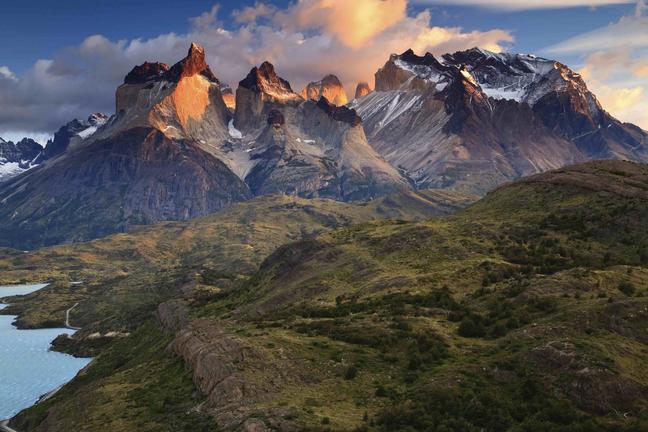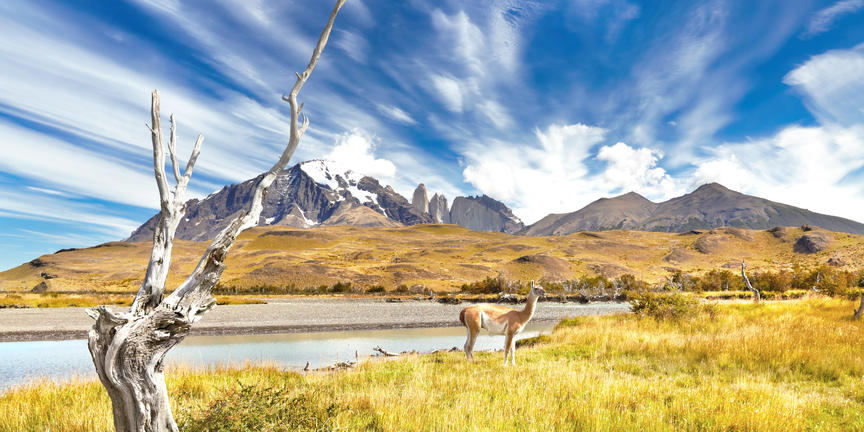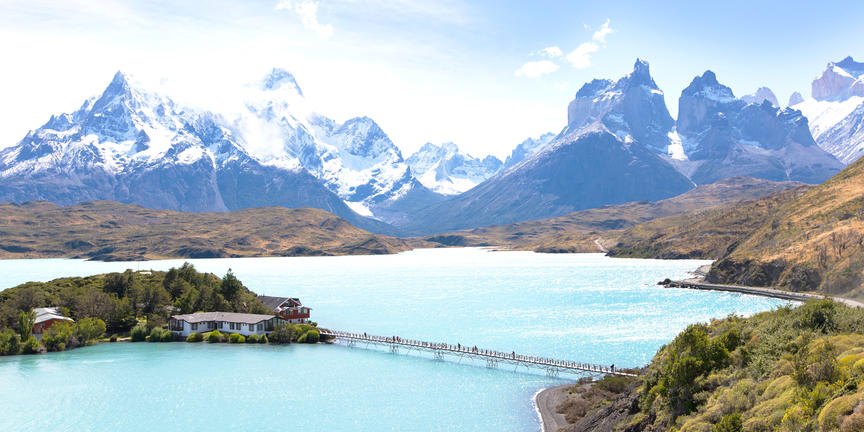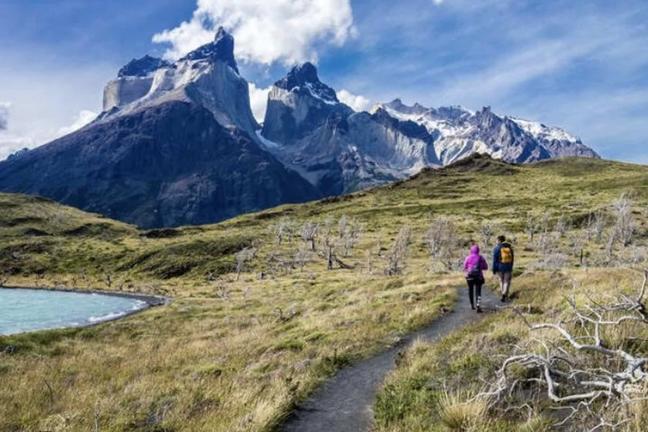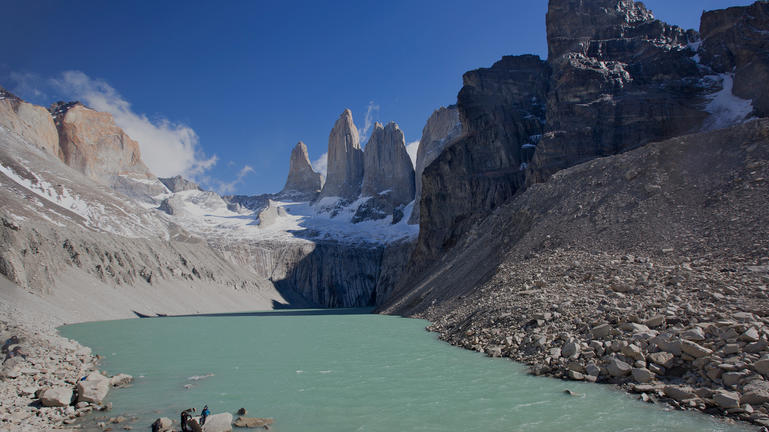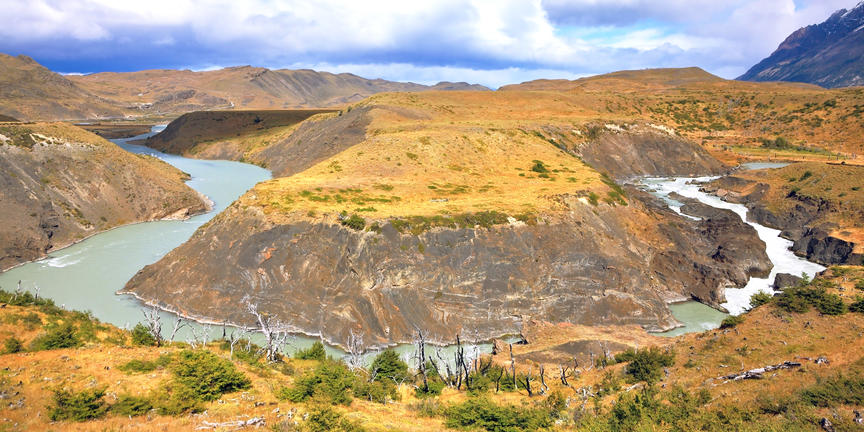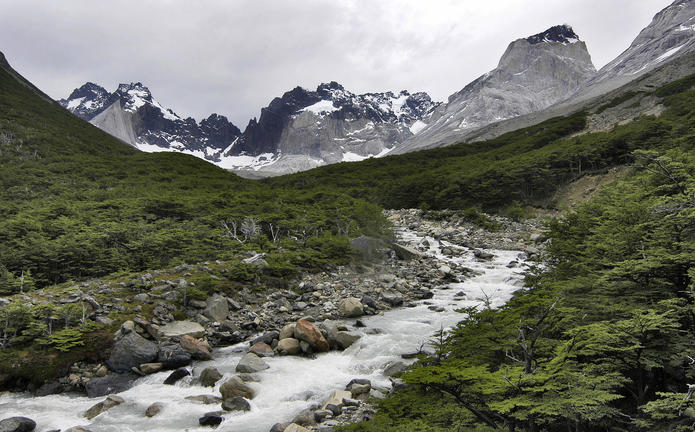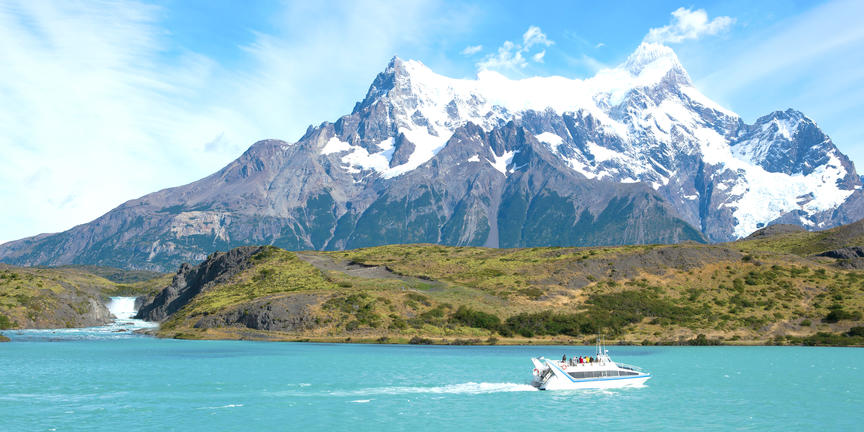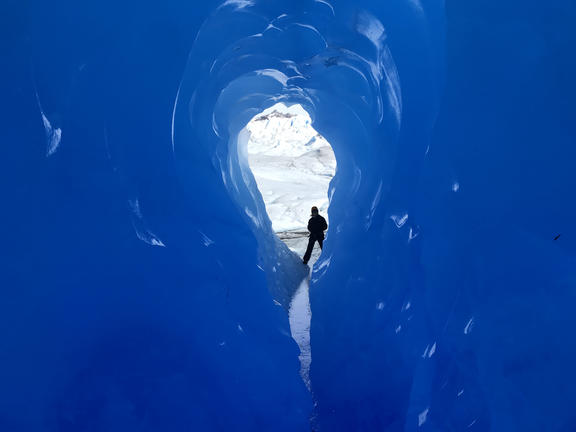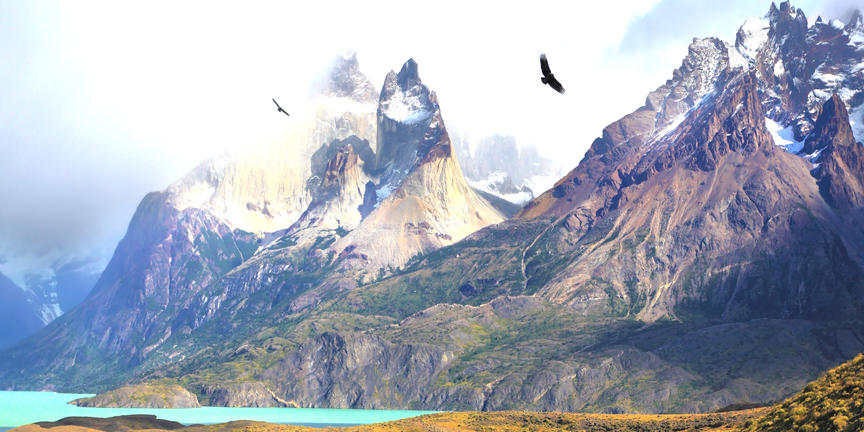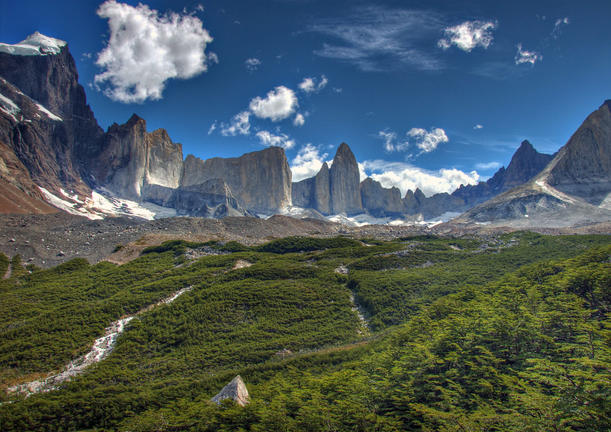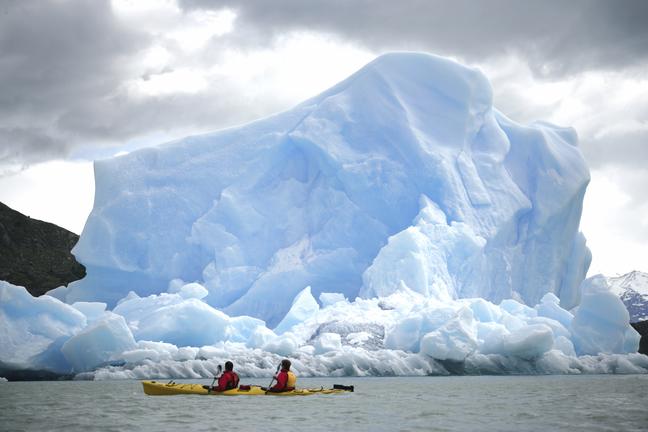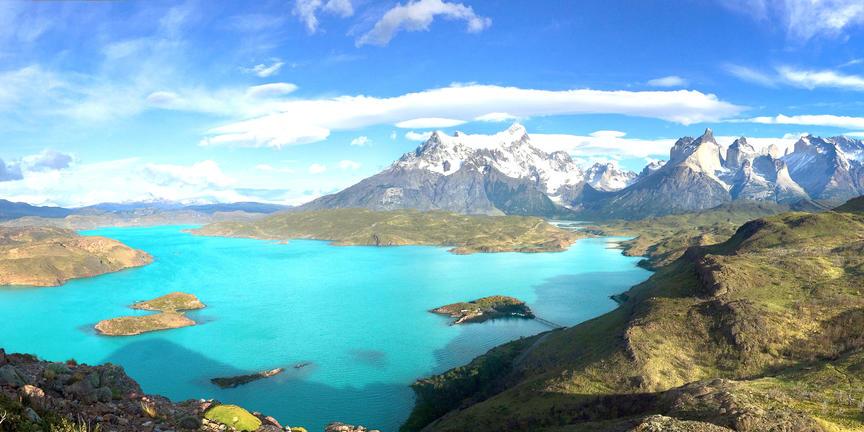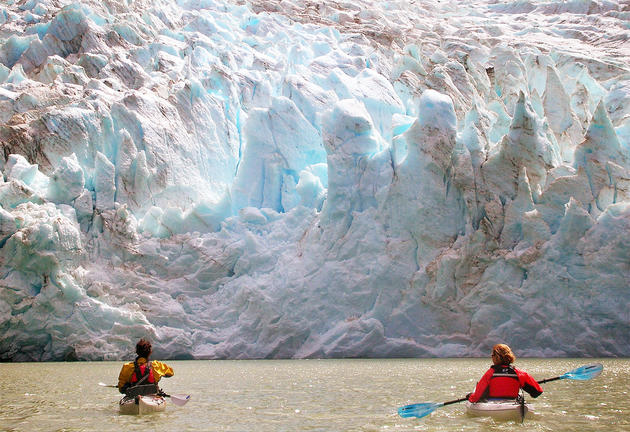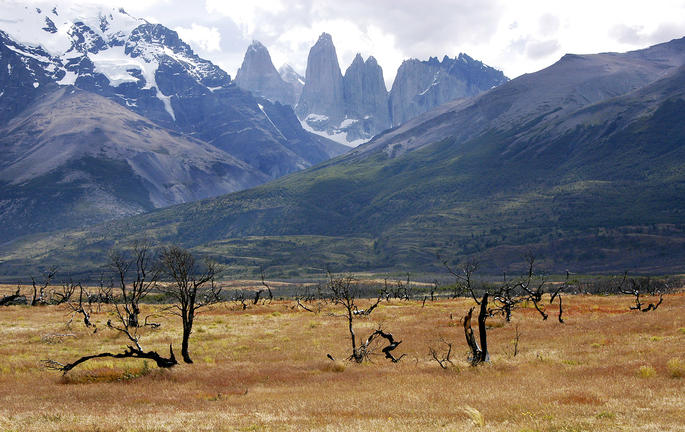Geography
The landscape of the park is dominated by the Paine massif, which is an eastern spur of the Andes located on the east side of the Grey Glacier, rising dramatically above the Patagonian steppe. Small valleys separate the spectacular granite spires and mountains of the massif. These are: Valle del Francés (French Valley), Valle Bader, Valle Ascencio and Valle del Silencio (Silence Valley).
The head of French Valley is a cirque formed by impressive cliffs. To west rise abruptly the colossal walls of Cerro Cota 2000 and Cerro Catedral. The former is named for its elevation (the highest contour line is about 2,000 m) and the latter is named so because its east face resembles a cathedral's facade. To the north stands the granite arête called Aleta de Tiburón (Shark's Fin). To the east, from north to south, lie the peaks Fortaleza (Fortress), La Espada (The Sword), La Hoja (The Blade), La Máscara (The Mummer), Cuerno Norte (North Horn) and Cuerno Principal (Main Horn).
Silence Valley is where standing face to face the gigantic granite walls of Cerro Fortaleza and Cerro Escudo (Shield Hill) with the western faces of the Torres del Paine. Ascencio Valley is the normal route to reach the Torres del Paine lookout, which is located at the bank of a milky green tarn. The highest mountain of the group is Paine Grande, although its elevation has not been determined with precision.
Much of the geology of the Paine Massif area consists of Cretaceous sedimentary rocks that have been intruded by a Miocene-aged laccolith. Subsequently, orogenic and erosional processes have shaped the present-day topography, being the glacial erosion the main one responsible for the sculpturing of the massif in the last tens of thousands of years. A good example of the latter are the Cuernos del Paine, whose central bands of nicely exposed granite strongly contrast with the dark aspect of their tops, which are remnants of a heavily eroded sedimentary stratum. In the case of Las Torres, what once was their overlying sedimentary rock layer has been completely eroded away, leaving behind the more resistant granite. Southern Patagonian Ice Field mantles a great portion of the park. Glaciers include the Dickson, the Grey and the Tyndall. Among the lakes are the Dickson Lake, Nordenskjöld Lake, Pehoe Lake, Grey Lake, Sarmiento Lake and Del Toro Lake. Only a portion of the latter is within the borders of the park. All of them characterize vivid colours due, in most of the cases, to rock flour suspended in their waters. The main river flowing through the park is Paine River. Most of the rivers and lakes of the park drain into Última Esperanza Sound via Serrano River.
Flora
Torres del Paine National Park is adorned with beautiful vegetation. Among them are the evergreen Embothrium coccineum, which produces vivid red flowers grouped in corymbs and the Calceolaria uniflora, of striking shape and colours. The park has 7 documented species of Orchidaceae, including the Chloraea magellanica.
In the park have been recorded 85 non-native plant species, of which 75 are of European origin and 31 are considered to be invasive. The park contains four vegetation zones:
· Patagonian Steppe – The vegetation of this zone is dominated by Fescue species (mainly Festuca gracillima), which are resistant to harsh winds and weather conditions that are typical of the Patagonian region,
· Pre-Andean Shrubland – Some of the dominant plant species of this biotic zone are the Mulinum spinosum (a cushion plant) and Escallonia rubra, which are frequently associated with other species, including Anathrophyllun desideratum and Berberis buxifolia,
· Magellanic Deciduous Forest – the forest is home to various species of trees such as the Nothofagus pumilio and Nothofagus antarctica, and the
· Andean Desert – above tree line, Escallonia rubra, Empetrum rubrum and Senecio skottsbergii take the place of Nothofagus pumilio trees.
Wildlife
Guanacos are one of the most common mammals found in the park. Other mammals include cougars and foxes. It is also home to the endangered Chilean Huemul, an antelope species. The park contains breeding populations of 15 bird of prey species. Among them are Andean Condor, Black-chested Buzzard-eagle, Rufous-tailed Hawk to name but a few. Other birds occurring in the park include the Chilean Flamingo, Darwin's Rhea, Coscoroba Swan, Black-necked Swan, Magellanic Woodpecker, Magellan Goose and Buff-necked Ibis.
